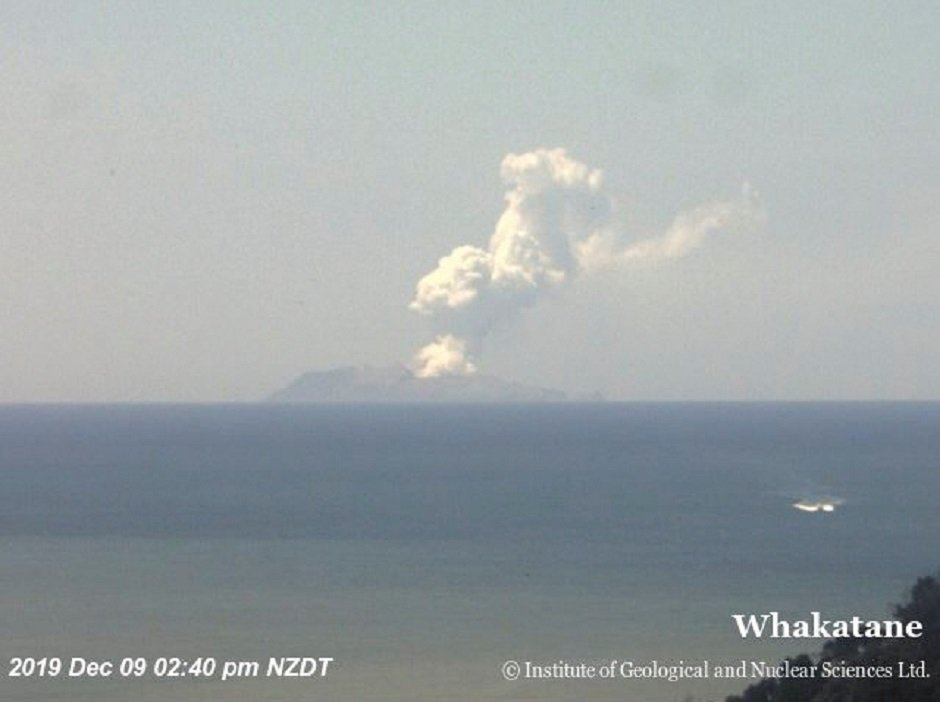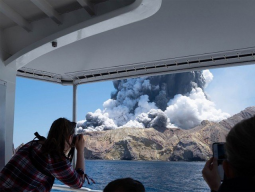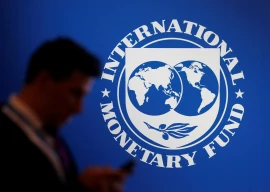
WHAKATANE: Intensifying fears of another eruption frustrated efforts to recover bodies from New Zealand's White Island on Thursday as the official death toll from the volcano disaster rose to eight.
Police said two people died in hospital overnight, taking the confirmed number of fatalities to eight, with the bodies of another eight people believed to be on the island.
Many more victims of Monday's explosion are battling to survive after suffering horrific burns at the popular tourist attraction, which police said was still too dangerous to land on.
"Police remain focused on supporting families at this terrible time," they said in a statement.
Health officials said that 23 survivors were being treated in New Zealand, 17 of them listed as critical, and another five had been transferred to Australia.
Sydney high school Knox Grammar named the latest fatalities as brothers Matthew and Berend Hollander, saying their deaths were a "devastating loss for our community".
It said the boys' parents, Barbara and Martin Hollander, were currently unaccounted for.
The survivors' injuries are so severe that an extra 1.2 million square centimetres (185,000 square inches)of skin for grafts were being sent from Australia and the United States.
A total of 47 day-trippers and guides were on the island when the blast occurred, hailing from Australia, the United States, Britain, China, Germany, Malaysia and New Zealand.
 This handout photo taken on December 9, 2019 and provided courtesy of Lillani Hopkins through her Facebook account on December 12 shows a plume of ash rising into the air as the volcano on White Island erupts off the coast of Whakatane on New Zealand's North Island.
This handout photo taken on December 9, 2019 and provided courtesy of Lillani Hopkins through her Facebook account on December 12 shows a plume of ash rising into the air as the volcano on White Island erupts off the coast of Whakatane on New Zealand's North Island.Recovery teams are on standby at nearby Whakatane but have so far been unable to deploy, leading to frustration in the local community.
"We are now living with a growing sense of desperation to bring home those that we know are there, those that we love," Whakatane mayor Judy Turner told reporters.
Seismologists said Thursday there was a 50 to 60 percent chance of another eruption on the island, which lies semi-submerged 50 kilometres (30 miles) off the coast.
Poisonous gases are still billowing from the volcanic vent and the island is blanketed in a thick layer of acidic ash.
GeoNet vulcanologist Nico Fournier said the dangers facing recovery teams if an eruption occurred included magma, superheated steam, ash and cannonball-like rocks thrown from the caldera at supersonic speed.
"We're talking about very high speed, high impact, high temperature," he told reporters, saying the volcano had not been as active since 2016.
Australian Prime Minister Scott Morrison said one Australian was confirmed dead and a further 10 were missing and presumed to have perished.
Canberra has sent three military aircraft with specialist medical crews to repatriate some of the survivors, with at least 12 Australians expected to be flown to burns units in the country.
One Malaysian has been confirmed dead and another was critically injured, while British officials said two of their citizens were injured.
The US embassy said nine Americans were on the island when it erupted and some were seriously injured.
A coronial process has begun to identify the eight confirmed dead but police said it "can take some time".
The island in the picturesque Bay of Plenty attracts more than 17,000 visitors every year and is marketed as an experience for the adventurous traveller.
But the threat alert level was raised in the week before the eruption, prompting questions about whether tour groups should have been allowed to visit.
Families of Australian victims expressed doubt that their loved ones were made aware of the risks of visiting the island.
"I think if he knew there was a danger, he would haven't gone on it," said Brian Dallow, whose son Gavin was believed killed along with his 15-year-old stepdaughter Zoe Hosking.
"So I'm pretty sure they weren't fully informed of the dangers, otherwise he would haven't gone. I'm quite sure of that. That's the only thing I can be really positive about."
WATCH: Death toll rises after sudden volcano eruption in New Zealand
Frustration grows for families of New Zealand volcano victims
The brother of a tour guide who died in the White Island volcano disaster said Thursday stalled efforts to recover victims' bodies showed "leadership had failed".
New Zealand man Hayden Marshall-Inman was among the first confirmed victims of Monday's eruption, with emotional accounts of his final moments on the island recalled by helicopter pilots who helped survivors.
Holding back tears, his brother Mark Inman told TVNZ that authorities were taking too long to recover bodies which he said could be picked up safely and securely by helicopter pilots like himself, who "know the island inside and out".
"It's not frustration that they can't get to the island, it is more frustration that they haven't gone to the island," he said early Thursday.
"There has been two perfect opportunities to get out there and they haven't gone. Red tape, bureaucracy -- leadership has failed."
Inman wrote to New Zealand Prime Minister Jacinda Ardern earlier this week asking for permission to enter the no-fly zone to collect his brother's body, a request he said was rejected.
Ardern admitted authorities need to do a better job of communicating retrieval efforts. "I did meet Mark Inman very briefly and his family on Tuesday and my heart goes out to them," she told reporters in Christchurch Thursday.
"I can't experience what that experience, that waiting, will feel like for them."
The death toll from Monday's tragedy now stands at 16 people, including eight people still missing on the island and presumed dead.
Acknowledging the "frustrations" of relatives waiting for answers about their loved ones, authorities announced late Thursday that police were planning to carry out a retrieval operation Friday morning - despite volcanologists' warnings that the chances of another significant eruption in the next 24 hours had risen to 50-60 percent.
A helicopter pilot who went to White Island Monday to rescue victims said he saw Marshall-Inman "in a pretty bad way".
Pilot Tom Storey told local media he moved Marshall-Inman to a more comfortable location while he helped other survivors, but was unable to get him off the island at the time.
An emotional Inman said his brother loved his job and always put others ahead of himself, adding that Storey had told him it appeared he had been trying to help those in need.
"His footsteps were going back to help on White Island," he said. "He was a true hero."
Others close to Marshall-Inman remembered him in a similar way.
"Anyone who knew him, we all just know that he would have been trying to help people," close friend Julia Gustafson told AFP. "Hayden was an incredibly generous person. A person that was totally full of life and enthusiastic about everything he did," she added.













































COMMENTS
Comments are moderated and generally will be posted if they are on-topic and not abusive.
For more information, please see our Comments FAQ